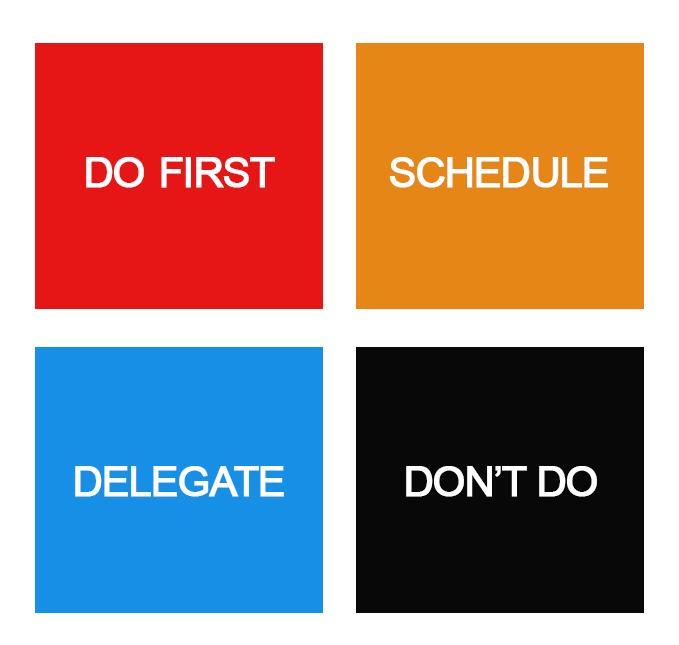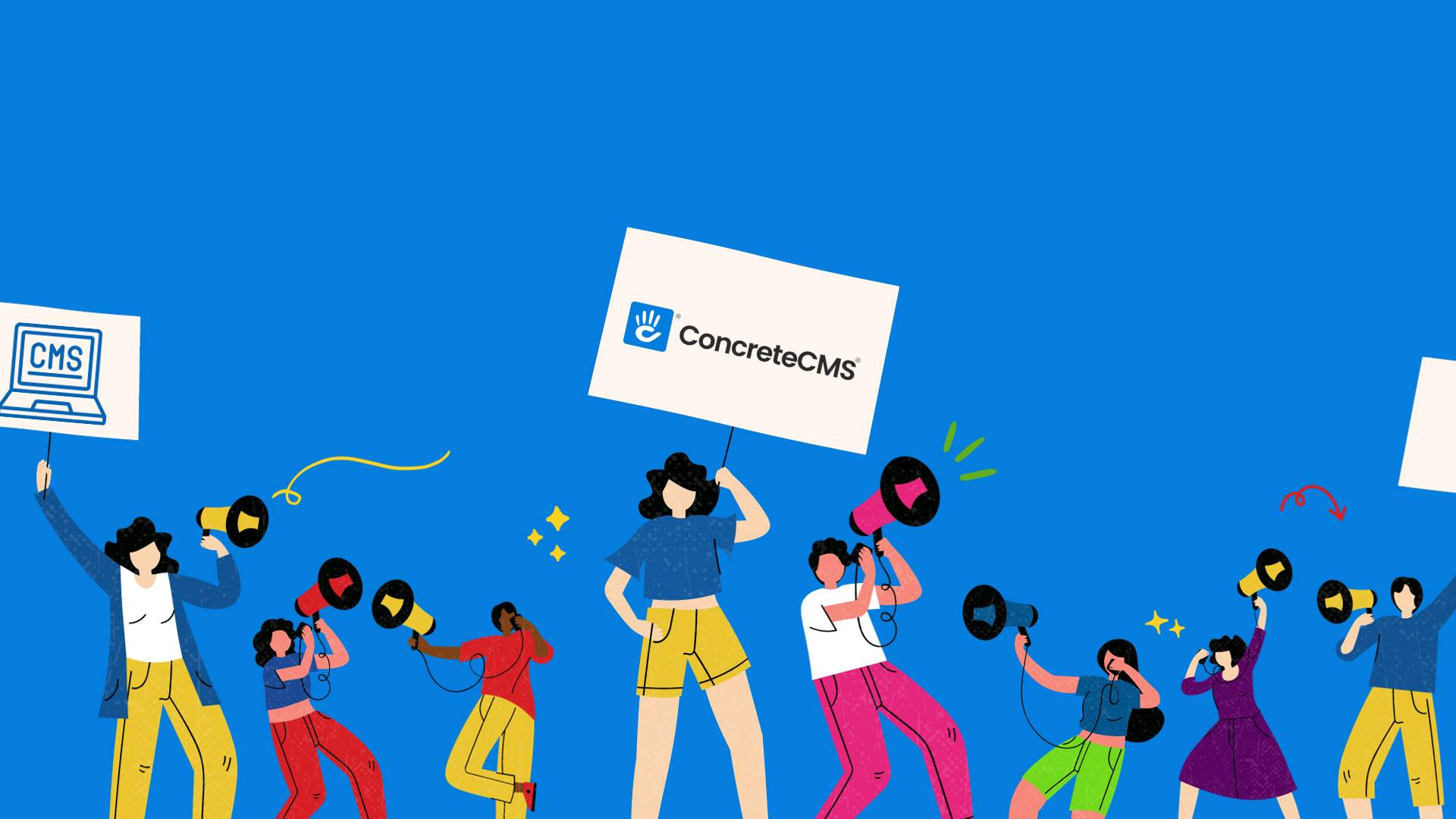Do you ever get the feeling that the number of website management tasks competing for your time far outstrip the available hours in a workday? You're not alone. The race against time, it would seem, is universal to workplaces large and small.
Be that as it may, there are measures you can take to ensure efficiency when running the company’s primary online presence. Follow these six practical time management tips for you and your team for efficient time management.
Set Clear Goals for Your Team
Before implementing the other time management tips in this article, set SMART short-term and long-term goals for your website team.
SMART is an acronym that’s short for specific, measurable, attainable, relevant, and time-based. A SMART goal is:
- Specific: Specificity means that the goal is definable and precise. Everyone is on the same page about what the team needs to accomplish.
- Measurable: When a goal is measurable, it means you can quantifiably track progress during the time frame within which it needs to be met.
- Attainable: Attainability speaks to a goal's realism, i.e., whether or not you can accomplish it. Your ability to set realistic deadlines will determine whether your goals are attainable.
- Relevant: A relevant goal is one that has a positive impact on your team because it wouldn’t make sense to pursue irrelevant or negatively impactful goals.
- Time-Based: All smart goals have a time limit for their accomplishment, hence the time-based aspect in the SMART acronym.
Setting SMART goals is one of the most essential time-management skills for running a website. It helps you and your team manage their time and the organization’s resources efficiently.
With a specific and relevant goal in mind, team members know the tasks to dedicate valuable time and energy to. When the goal is measurable, attainable, and time-based, you, as the manager, can gauge progress and address any bottlenecks that hamper it.
All that said, what are SMART goals for website teams like yours then? These will, of course, depend on you, but here are two to give you an idea. An example of a short-term goal for your team could be to write a persuasive call-to-action to replace the old one by lunchtime. A longer-term goal could be to complete a website redesign by the end of the year’s second quarter.
Avoid Multitasking
Multitasking is often misconstrued as a time-management technique. In reality, studies have shown that it can be detrimental to productivity and that only a small number of people can do it.
Contrary to popular belief, multitasking isn’t doing two things at once. It’s switching between tasks rapidly, an action that requires considerable mental energy and which splits the multitasker's focus.
You and your website management team will do well to avoid multitasking at all costs. Why? Because the human brain isn't designed for the rapid switching that multitasking demands.
When someone alternates between, say, writing new website copy and uploading new site product images quickly, the brain has to contextualize the information required to perform each task. This process can be mentally draining because the brain will process information for more than one task. The result? They just end up working slowly.
Rather than multitasking, enforce the habit of working on one task at a time. Allocate time blocks so that you can give each task your undivided attention. Also, where possible, take regular breaks between tasks to prevent burnout and encourage recovery. Of course, you should encourage your website team to do all these, too. When assigning tasks, give them enough time to finish each so they don’t have to resort to multitasking as well.
Ditch multitasking and you and your team will get to use your time in a highly efficient manner. A strategic approach to task management is utilizing Story Points, which can help in understanding the complexity and time requirements of tasks, ensuring a focused effort on one task at a time. Learn more about Story Points And How PortlandLabs uses them.
Prioritize Tasks
You and your team probably have a list of to-dos you need to accomplish for the website. Save time by organizing the items on your task list in order of priority.
One way to sort high-priority tasks from less urgent ones is to use the Eisenhower Matrix. Developed by the 34th president of the United States, this tool can help you and your website team prioritize the tasks on your to-do list.
Under the Eisenhower’s matrix, tasks are sorted into the four quadrants listed below:
- Do First: The most urgent website management tasks fall into this quadrant. They may have a fixed or tight deadline or they may be tasks with missed deadlines.
- Schedule: Tasks in this quadrant, while important, don’t have set deadlines, and so take lower priority than the "Do First" tasks.
- Delegate: If the workload contains tasks that other people can do, it should be in this quadrant. For instance, writing blog posts or designing a landing page. We’ll talk more about delegation later.
- Don’t Do: Any tasks in the "Don’t Do" quadrant are likely not essential to meeting your business goals. Thus, they can be removed from the list.

Once you and your team have your individual tasks sorted, start the ones in the “Do First” quadrant. While doing these, you can all assign the ones in the “Delegate” quadrant to fellow team members. Only after you’ve completed the highest-priority tasks on your list should you move on to the tasks in the “Schedule” quadrant.
When you and your team prioritize tasks, you can commit more time to the highest-priority ones, identify delegation opportunities, and eliminate time-wasting pursuits.
Eliminate Distractions
Our professional lives are full of hundreds of distractions that eat into the limited time we have to accomplish our daily goals. Message notifications, co-worker conversations, multiple open browser tabs—these factors and more take our eye off the ball and impact our productivity.
A huge part of effective time management is eliminating distractions so you and your team can enter a flow state for maximum productivity. Some measures all of you can take to avoid unwanted distractions when running your organization’s website include:
- putting your phone on silent or airplane mode
- wearing headphones to deter colleagues from making conversation
- putting PC notifications on “Silent”/”Do Not Disturb” mode
- closing unnecessary browser tabs
- storing phones out of view
However, welcome distractions require a different approach. If you and your team members find yourselves doing everything but writing website copy or optimizing new site images as you should, you may have a procrastination problem. But don't worry. Workplace procrastination, i.e., the act of delaying tasks until the last minute, is fairly common. According to statistics on time management, a whopping 88% of the workforce does it.
So what can you, as the website manager, do?
Try the Eat the Frog productivity method by leadership expert Brian Tracy with your team. It’s a lot like the Eisenhower approach for task prioritization. Only, this method involves tackling challenging tasks first before moving on to easier ones. When all of you get the most difficult task out of the way, you’ll all feel a sense of accomplishment that motivates you to complete your other tasks. In other words, you eliminate those welcome distractions that keep you from being productive.
Delegate When Possible
We’ve talked briefly about delegation when we discussed the Eisenhower matrix. But because it’s one of the most essential time-management strategies, let’s discuss it in more detail here.
As time management tips go, this one is a doozy for website managers like you because it lets you killl two birds with one stone.
Delegating buys you the extra time needed to tackle higher-priority to-dos on your list of tasks. However, it also has the secondary benefit of letting you assign responsibility to junior staff members. This action can provide positive benefits for your organization long term. How?
Well, studies have shown that delegation promotes feedback-seeking behavior in employees and can be psychologically empowering. In other words, employees who are given responsibility will likely seek external performance evaluation. They’ll want to know how they did and where they can improve. When you have employees who end up excelling in what they do, you can expect organizational success.
But delegation isn’t exclusively for people in leadership positions like you. Your team members can delegate tasks even if they don’t have anyone working under them. For example, the website’s content person could leverage an AI assistant when crafting article outlines. You can check out this blog post on generative AI to learn more.
So when should you and your team members delegate a task? When:
- it's a task anyone can complete
- there aren't any time constraints associated with it
- the task isn't critical but still provides growth and development opportunities for inexperienced staff
- it's a recurring task
Anyone who decides to delegate should, however, still monitor the work progress especially if the person tasked with the job hasn’t had much experience doing it. If you, for example, asked someone to optimize your existing blog posts and it’s their first time to do so, for instance, you want to make sure they do it properly.
Utilize Productivity Tools
Productivity tools can help you and your team save time. If you can expedite tasks with tools without compromising the quality of your work, why not do it? Ultimately, the tools will help ensure your overall efficiency.
Here are some tools team members typically use to save time:
- Trello: A project management tool that uses kanban-style boards for task tracking.
- ClickUp: An all-in-one tool that provides features like whiteboards for collaborative planning.
- Slack: This tool is excellent for communication and making office-wide announcements.
- Google Calendar: A fantastic scheduling tool for keeping on top of meetings, deadlines, and so on. It integrates with multiple apps, including Slack.
For website managers like you, you’ll need a content management platform built specifically for website management and creation. With its excellent features, Concrete CMS can help you run your site efficiently. Training website content editors can be done quickly through the platform.
Even if you delegated tasks to members of your team, you can still easily supervise every aspect of the website without spending hours determining who did what and when. The tool can automatically track changes made to the site and gives you a complete record of who made the change.
In Closing
Time management is key in the workplace. If you and your website team can manage your time properly, you can ensure productivity and efficiency, and easily meet team goals.
The time management tips discussed in this article can help make daily life in the office more productive.
Setting goals for your team keeps employees on the ball and time-conscious. When you and your team avoid multitasking, you prevent mental fatigue from slowing your momentum. Prioritizing tasks ensures that all of you get the most essential ones done by their respective deadlines. Eliminating distractions prevents procrastination while delegating tasks frees up time for more important ones. Finally, consider incorporating productivity tools into your website workflow for you and your team members.
Follow these tips. You and your website team will work more efficiently and will likely never miss a deadline.
Author Bio
Owen Jones is the Senior Content Marketer at ZoomShift, an online schedule maker app. He is an experienced SaaS marketer, specializing in content marketing, CRO, and FB advertising. He likes to share his knowledge with others to help them increase results.
